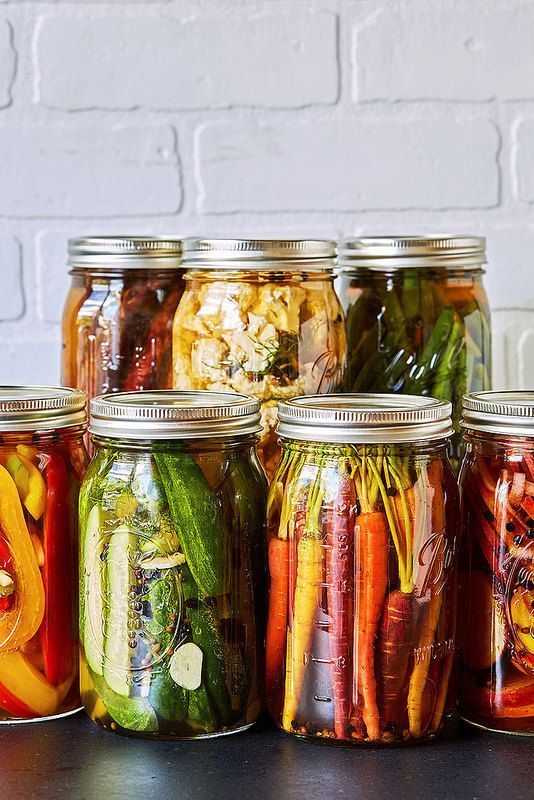In the realm of culinary delights, quick pickled vegetables are a true unsung hero. They add a burst of tangy flavor and a satisfying crunch to any dish, from salads to sandwiches and beyond. Not only are they delicious, but they also pack a punch in terms of health benefits. Let’s delve into the world of quick pickled vegetables, exploring their ingredients, preparation, serving suggestions, and more.
Benefits of Quick Pickled Vegetables:
Quick pickling involves immersing vegetables in a mixture of vinegar, water, salt, and sugar for a short period, typically just a few hours. This process not only preserves the vegetables but also enhances their flavor profile. Here are some key benefits:
- Enhanced Flavor: Pickling vegetables elevates their taste, adding a delightful tanginess that complements a wide range of dishes.
- Extended Shelf Life: While quick pickling doesn’t offer the same longevity as traditional canning methods, it still extends the lifespan of your vegetables, allowing you to enjoy them for longer.
- Increased Digestive Health: The fermentation process involved in pickling can introduce beneficial probiotics, which promote a healthy gut microbiome.
- Versatility: You can pickle a variety of vegetables, from classic cucumbers to carrots, radishes, onions, and more, allowing for endless flavor combinations.

Ingredients:
- Vegetables: Choose your favorite vegetables or a mix of them. Cucumbers, carrots, red onions, and bell peppers are popular choices.
- Vinegar: Use white vinegar, apple cider vinegar, or rice vinegar for a tangy base.
- Water: Dilutes the vinegar to achieve the desired level of acidity.
- Salt: Adds flavor and aids in preservation.
- Sugar: Balances the acidity and adds a hint of sweetness.
- Aromatics: Optional additions like garlic, herbs (dill, thyme, or cilantro), and spices (peppercorns, mustard seeds, or red pepper flakes) can enhance the flavor profile.
Step-by-Step Preparation Instructions:
- Prepare the Vegetables: Wash and slice your vegetables into uniform pieces. You can choose to leave them raw or blanch them briefly for a softer texture.
- Make the Brine: In a saucepan, combine equal parts vinegar and water. Add salt and sugar to taste, typically around 1 tablespoon each per cup of liquid. Bring the mixture to a boil, stirring until the salt and sugar dissolve.
- Add Flavorings: Toss in any aromatics you desire, such as garlic cloves, fresh herbs, or spices. Let the mixture simmer for a few minutes to infuse the flavors.
- Pack the Jars: Place the prepared vegetables into clean, sterilized jars, packing them tightly. Pour the hot brine over the vegetables, ensuring they are completely submerged.
- Cool and Refrigerate: Allow the jars to cool to room temperature before sealing them tightly and placing them in the refrigerator. Quick pickled vegetables are ready to eat after a few hours but will improve in flavor if left to marinate overnight.
Variations and Substitutions:
- Sweet Pickles: Increase the sugar content for sweeter pickled vegetables.
- Spicy Pickles: Add chili peppers or red pepper flakes to the brine for a spicy kick.
- Asian-Inspired: Use rice vinegar and add ginger and soy sauce for an Asian twist.
- Herb Infused: Experiment with different herbs like rosemary, thyme, or tarragon for unique flavor profiles.
Serving Suggestions:
Quick pickled vegetables are incredibly versatile and can enhance a wide range of dishes, including:
- Salads: Add a pop of flavor and texture to leafy green salads or grain-based salads.
- Sandwiches and Wraps: Layer pickled vegetables in sandwiches, wraps, or burgers for extra crunch and zing.
- Charcuterie Boards: Serve alongside cured meats and cheeses for a vibrant and tangy contrast.
- Tacos and Tostadas: Top your favorite Mexican-inspired dishes with pickled vegetables for added freshness.

Health Benefits:
In addition to their delicious taste, quick pickled vegetables offer several health benefits:
- Low in Calories: They’re low in calories, making them a healthy addition to meals.
- Rich in Nutrients: Vegetables retain most of their nutrients through the pickling process, providing essential vitamins and minerals.
- Digestive Support: The probiotics produced during fermentation can support gut health and digestion.
Safety Tips:
While quick pickling is relatively safe, it’s essential to follow these guidelines:
- Use Clean Equipment: Ensure jars and utensils are thoroughly cleaned and sterilized to prevent contamination.
- Refrigerate Properly: Store pickled vegetables in the refrigerator to prevent spoilage.
- Consume Promptly: Quick pickled vegetables are best enjoyed within a few weeks for optimal taste and texture.
Conclusion:
Quick pickled vegetables are a simple yet delightful way to elevate your meals. With just a few ingredients and minimal effort, you can create a versatile condiment that adds flavor and flair to any dish. Whether you’re a culinary enthusiast looking to experiment with new flavors or a health-conscious individual seeking nutritious additions to your diet, quick pickled vegetables are sure to impress.
Final Thoughts:
Don’t be afraid to get creative with your pickling adventures. Experiment with different vegetable combinations, brine ratios, and flavorings to find your perfect pickle. With quick pickled vegetables in your culinary arsenal, you’ll never have a dull meal again. So, roll up your sleeves, chop some veggies, and pickle away to culinary bliss!


“Thank you for being a motivational architect, designing a blueprint of success and inspiration in every post.”
Thanks for providing your feedback, we really appreciate your response.
Subscribe to get more helpful articles for our website.
Thanks.